
For Lovely Views and Healing
Tour around San’in Kaigan Geopark
Last update
Geopark has been in the spotlight worldwide in recent years. The word is a combination of Geo, meaning the globe/earth, and Park. It is a natural park not only beautiful geographically but also scientifically important as the heritage of earth where one can experience the Earth’s natural history. Geopark preserves valuable nature, as well as offers a place to study earth science and to enjoy the fascinating tourism resource.
Here, we are sharing San’in Kaigan Geopark that covers Kyoto (Kyotango City), Hyogo (Toyooka City, Kami Town, Shinonsen Town) and Tottori (Iwami Town, Tottori City). The most impressive virtue of the park is the fascinating views. Many programs for experiencing the power of nature, hot springs with local gourmet, food in four seasons from the mountain and ocean, the historical townscapes, all are there to heal your body and mind. Come to San’in Kaigan Geopark and immerse in the beauty of Tottori, Hyogo and Kyoto.
The 1st Day
The modern industrial heritage, Ikuno Ginzan and the former mine
To begin your tour, visit the prominent modern industrial heritage, Ikuno Ginzan (silver mountain) designated as Japan Heritage. Major mining began in 1542, controlled directly by the warlords Oda, Toyotomi and Tokugawa. In 1868, it became the first government mine, then the imperial property. It was closed in 1973, but the scenes of the old days are recreated there, and part of the mining tunnel is open to the public for a tour. You can see the silver lines on the exposed rock walls and dolls that depict the tasks in modern mining. Stop by at the information center on the premises and see the 3-D model of the mining tunnels spread in every direction like an ant nest.

From the entrance with the French-style arch, a 1,000m (0.6 miles) course stretches in the tunnel, about a 40 min tour.

The dim tunnel is at 13ºC(55°F)all year, cool in summer and rather warm in winter.

A tram ran in the tunnel for efficient hauling. Dolls depict the modernized mine and the old-fashioned handwork done in the Edo Period.

Up to the Edo Period, tasks were done by hand. Note the old tunnels were so narrow that a person could barely go through.

After touring Ikuno Ginzan, drive 5 minutes and visit the former mining town. Elegant houses from the early modern era show the prosperity of the time.

To transport silver, a road was set up between Ikuno and Himeji around the 1870s, which was Japan’s first industrial highway. You can still see the historical and cultural road that supported the prosperity of the Ikuno silver mine and the mining town.
- Name in Japanese
-
史跡生野銀山
Ikuno Ginzan - Postal Code
- 679-3324
- Address
- 33-5 Ikunochokono, Asago City, Hyogo.
- Telephone
- 079-679-2010
- Hours
-
April-October 9:10am-5:20pm / November 9:10am-4:50pm / December-February 9:40am-4:20pm / March 9:40am-4:50pm
*Tour is admitted until 40 min before closing - Holiday
- Tuesdays during 3 months of Dec-Feb (if falls on a holiday, the next day is closed), the end and the beginning of the year
- Admission
- Adult 900 yen (inside and outside the tunnel, Mining Museum, and Fukiya Museum)
- Payment
- Cash only
- Directions
- From Chugoku Expressway, Fukusaki Interchange, drive for about 40 min.
- Official Website
- Official Website (Japanese)
- Name in Japanese
-
生野の町並み
Ikuno Town - Telephone
- 079-679-2222 (Asago City Visitor Information Center)
- Directions
- From Chugoku Expressway, Fukusaki Interchange, drive for about 40 min.
- Official Website
- Official Website (English)
Seafood from the Japan Sea at Tottori Port Market Karoichi Look for souvenirs and enjoy a seafood bowl lunch
One of San’in coast’s attractions is a variety of food. The best of all is the fish caught at the sea before you. At Tottori Port Seafood Market Karoichi, fresh seafood directly sent from Tottori Port is available throughout the year. Locals love the fish in season at reasonable prices here. Tottori’s specialty Tofu-Chikuwa may be good as a souvenir. In the market, there are many restaurants. Try Karoko’s famous Special Seafood Bowl for lunch.

Tottori Port Seafood Market Karoichi, Tottori’s famous gourmet spot.

The lively market with customers.

During the Matsuba Crab season between November and March, shoppers come from afar.

The famous market restaurant Karoko serves fresh seafood at reasonable prices. The generous Special Seafood Bowl at 2,180 yen is popular.

Squid Bowl at 2,300 yen comes with the clear squid, the sign of freshness. Enjoy the crunchy texture.
- Name in Japanese
-
鳥取港海鮮市場かろいち
Tottori Port Seafood Market Karoichi - Postal Code
- 680-0908
- Address
- 3-27-1 Karochonishi, Tottori City, Tottori
- Telephone
- 0857-38-8866
- Hours
-
9:00am-5:00pm
*There may be seasonal changes. Call the market. - Holiday
- January 1st
- Payment
- Varies from shop to shop
- Directions
- From Tottori Expressway, Tottori Interchange, drive for about 15 min.
- Official Website
- Official Website (Japanese)
- Name in Japanese
-
市場料理 賀露幸
Restaurant Karoko - Postal Code
- 680-0908
- Address
- 1F Tottori Port Seafood Market Karoichi 3-27-1 Karochonishi, Tottori City, Tottori
- Telephone
- 0857-32-0811
- Business Hours
- 9:30am-9:00pm
- Holiday
- Open every day
- Payment
- Cash only
- Directions
- From Tottori Expressway, Tottori Interchange, drive for about 15 min.
- Official Website
- Official Website (Japanese)
Hakuto Beach, the stage of Japanese mythology, and power spots for romance
After lunch, refresh yourself in the sublime nature and a spiritual spot. Look over Hakuto Beach, the stage of the mythology long told in Japan, and visit Hakuto Shrine, where a white rabbit is enshrined as a god of romance. Tell your wish in your heart. On the approach, white rabbit statues welcome you.

Hakuto Beach with white sand and blue ocean is famous as the stage of the mythology “The White Rabbit of Inaba.”

Hakuto Shrine, the popular power spot for romance, is a short walk away from Hakuto Beach.

A white rabbit statue on the approach to the Hakuto Shrine
- Name in Japanese
-
白兎海岸
Hakuto Beach - Telephone
- 0857-22-3318 (Tottori City Tourist Information Center)
- Official Website
- Official Website (Japanese)
- Name in Japanese
-
白兎神社
Hakuto Shrine - Postal Code
- 689-0206
- Address
- 603 Hakuto, Tottori City, Tottori
- Telephone
- 0857-59-0047(9:00am-4:00pm)
- Directions
- From Tottori Expressway, Tottori Interchange, drive for about 20 min.
- Official Website
- Official Website (English)
The world’s first “sand” museum for your artistic moments
Next, let’s visit Tottori Sand Dunes. Enjoy sculptures made of sand at “The Sand Museum”. Sand statues of grand scales with intricate details fill the museum. Take a look at the unique art of sand in the world’s first sand museum.

“The Sand Museum” displays the sand sculptures of world-famous artists.

Each year, themes are changed. Currently, the 13th exhibition “Czechia & Slovakia: A History of Prosperity and Decline, Trace of Sacred Mystery” is being held.
(Until January 3, 2022)

Charles Bridge currently on display. Hard to believe it is made of sand!
- Name in Japanese
-
鳥取砂丘 砂の美術館
The Sand Museum - Postal Code
- 689-0105
- Address
- 2083-17 Fukubechoyuyama, Tottori City, Tottori
- Telephone
- 0857-20-2231
- Hours
-
9:00am-4:00pm. Weekends and holidays 9:00am-5:00pm
*Last admission is 30 minutes before closing - Holiday
- Current exhibition until Jan 3, 2022. Check future exhibitions on the website.
- Admission
- Adult 600 yen
- Payment
- Cash or credit card (Visa, MasterCard, JCB, American Express)
- Directions
- From Tottori Expressway, Tottori Interchange, drive for about 20 min.
- Official Website
- Official Website (English)
Tottori Sand Dunes, “The Miracle of Creative Art” by Mother Earth
After seeing the sand art by artists, head for Tottori Sand Dunes that nature has created in many years. The fascinating tapestry made by the wind and sand is called “the Miracle of Creative Art.” Not only walking on the sand dunes, but you can also ride a camel, go hang-gliding, paragliding, or try other fun activities. You may want to do Sunset Yoga on the golden sand dunes in the sunset by the ocean.

Stop by at the visitors Center on Tottori Sand Dunes and see displays on sand dunes and the geopark. A guide is always there as well.
(Photo provided by Natural Park Foundation Tottori Branch)

Sunset Yoga on Tottori Sand Dunes. Capture the power of Mother Nature.
- Name in Japanese
-
鳥取砂丘
Tottori Sand Dunes - Postal Code
- 689-0105
- Address
- 2164-971 Fukubechoyuyama, Tottori City, Tottori
- Telephone
- 0857-22-0021 (Tottori Sand Dunes Visitor Center 9am -5pm, open throughout the year)
- Directions
- From Tottori Expressway, Tottori Interchange, drive for about 20 min.
- Official Website
- Official Website (English)
- Name in Japanese
-
砂丘ヨガ
Yoga on Tottori Sand Dunes - Meeting place
- In front of Ray Garden parking lot (2164-804 Yuyama, Fukube-Cho, Tottori City, Tottori, Sand dunes House, Ray Garden)
- Hours
- Varies from season to season. Check the official website.
- Fee
- Sunset Yoga Exercise 5,000 yen
- Payment
- Cash or credit card (Visa, MasterCard, JCB, American Express)
- Directions
- From Tottori Expressway, Tottori Interchange, drive for about 20 min.
- Official Website
- Official Website (Japanese)
Iwai Onsen - the oldest hot spring in San’in Region Stay at Iwaiya and enjoy fresh seafood
Drive for about 20 minutes from Tottori Sand Dunes, you will get to Iwai Onsen, which has 1200 years of history. On your 1st day, stay at Iwaiya, a traditional inn of over 150 years in operation. It is famous in the region for its secret source spring good for soothing your fatigue. Savor the seafood from the Japan Sea and kickback.

Rock oysters in summer, crab in winter. Savor the season’s best.

Enjoy the undiluted source spring at Iwai Onsen for your best soothing time.
- Name in Japanese
-
岩井温泉 岩井屋
Iwaiya - Postal Code
- 681-0024
- Address
- 544 Iwai, Iwamicho, Iwamigun, Tottori
- Telephone
- 0857-72-1525
- Hours
- Check-in 3:00pm / Check-out 10:00am
- Rates
- One night with 2 meals, for two guests in one room, 19,800 yen/guest onwards (including tax)
- Payment
- Cash or credit card (JCB, Visa, MasterCard, UC, NICOS, etc.)
- Directions
- From Tottori Expressway, Tottori Interchange, drive for about 30 min.
- Official Website
- Official Website (Japanese)
The 2nd Day
Feel the dynamism of the steep cliff and the water clarity of 25m! Relax in a cruise ship around Uradome Beach
On the 2nd day, be active around the scenic San’in Kaigan Coast. The first stop can be beautiful Uradome Coast with the clear water, white sand and green pine trees along the stunning sawtooth coastline. This beach was formed about 33 million years ago when Japan was part of the continent. The magma below the continent cooled to form granite, which was eroded by the Japan Sea, wind and snow. The cliffs, caves and bizarre rocks talk about the earth’s history. Hop onto the Uradome Coast Island Boat Tour and enjoy the 40-min captivating excursion.

During the cruise, the captain shares interesting stories about the Uradome Coast - how it was formed, the origin of the unique name, etc.

The clarity of the water is 25m (82 ft) deep, and it’s just amazing.

Kamogaiso, one of the scenic spots. One of the best along Uradome Coast with extraordinary bays, small islands, and the beach sparkling with bits of quartz.

White sand, blue ocean and pine trees make superb contrast at Shirawara Coast. On the north side, five Natane Islands are connected to the beach. The last island is the biggest and canola blooms on the cliff in spring.

50m (164 ft) in circumference and 10m (33 ft)-tall cave is topped with a pretty pine tree. Sengan Matsushima is one of the incredible rocks of the Uradome Coast.
- Name in Japanese
-
浦富海岸(鴨ヶ磯・城原海岸・千貫松島)
Uradome Beach (Kamogaiso / Shirawara Coast / Sengan Matsushima) - Official Website
- Official Website (Japanese)
- Name in Japanese
-
浦富海岸 島めぐり遊覧船
Uradome Kaigan Island Touring Boat - Postal Code
- 681-0073
- Address
- 2182 Otani, Iwamicho, Iwamigun, Tottori
- Telephone
- 0857-73-1212
- Hours
- March-November 9:30am-3:30pm (Leaves the port every hour)
- Fare
- Adult 1,500 yen
- Payment
- Cash or credit card (Visa, MasterCard, American Express, JCB, UnionPay, etc.)
- Directions
- From Tottori Expressway, Tottori Interchange, drive for about 40 min.
- Official Website
- Official Website (English)
Explore the dynamic scenery of the Kasumi coast on a small chartered boat
A 40-minute drive from Uradome Beach brings you to the Kasumi coast. Kasumi bay is the best geo spot to observe various topography and geology from the time of their forming of the Sea of Japan to the present. Get the best geosite tour with the “Kasumi Geo Taxi”, a small chartered boat that takes you to many spectacular spots! After disembarking, enjoy driving along the coastline. The next spots are “Hasakari Rock” and ”Nekozaki peninsula” to search for great sceneries.

“Yoroi-no-sode (the sleeve of armor)” presents some strange sceneries located on the Kasumi coast. It was designated as a state's natural monument. The spectacular cliff of about 65 m high and 200 m wide will leave you in awe. Countless columnar joints and tubular joints are crossed, making a figure like a sleeve of armor used by the Japanese samurai.

Close approach to the rock! Observing the fossil layers is one of the fun of the geosite tour.

This strange unique rock is looking like a human’s face.

Even with a mini-boat, the cave entrance is difficult to pass through. But once you’re inside the cave, a marvelous view will surround you.

“Ao-no-Hiroba (The blue square)” in the cave is a highlight of the cruise of “Ao-no-Hiroba, and Taka-no-su Jima (60 minutes)”. On a sunny day, the sunlight reflects the surface of the water and creates a shining emerald green square.

After driving along the San’in coast from Kasumi coast for about an hour, you will see the “Hasakari Rock” at Takeno beach. There are strangely structured rocks with a 3-4 m diameter rock sandwiched between two large pillar-shaped rocks. This peculiar balanced landscape made by nature will surely amuse you.

“Nekozaki peninsula” is stretched from Takeno-hama to the Sea of Japan. The shape seen from the side looks like a cat with its shoulders hunched. It also became popular for tourists with its nickname “Kewpie peninsula” because it looked like a Kewpie lying on its back.
- Name in Japanese
-
かすみ海上 GEO TAXI
Kasumi Geo Taxi - Postal Code
- 669-6542
- Address
- 93-2 Kasumi-ku hitoichi, Kamicho, Mikata Gun, Hyogo
- Telephone
- 080-2434-0001
- Hours
-
9:00am-5:00pm (It is closed from October to March)
*Cancel if the weather is stormy - Passage Fare
- A 60-minute cruise. Adult: 5,500 yen
- Payment
- Cash only
- Directions
- About 20-minute drive from Kasumi IC on San'in Kinki Expressway
- Official Website
- Official Website (Japanese)
- Name in Japanese
-
はさかり岩
Hasakari Rock - Official Website
- Official Website (Japanese)
- Name in Japanese
-
猫崎半島
Nekozaki peninsula - Official Website
- Official Website (Japanese)
Enjoy a premium Tajima beef lunch at a restaurant specializing in Tajima beef
After spending an active day on the San’in Coast, treat yourself to a lunch of Tajima beef, the finest Japanese black wagyu raised in the Tajima climate. Only the best meat, carefully selected from 10 cattle a month shipped from “Ueda Livestock” in Muraoka, Kami Town, which has produced champion cattle in many competitions, can be served at “Irori Dining Mikuni”, a restaurant specializing in Tajima beef in Kinosaki Onsen. Tajima cattle are raised with love and care in every way, from the environment to the way they are raised, and have a distinct flavor that sets them apart from other cattle.

Tajimaguro Roast Steak Bowl Set (with salad and soup) 6,050 yen (tax included)
- Name in Japanese
-
但馬牛いろりダイニング三國
Irori Dining Mikuni - Postal Code
- 669-6101
- Address
- 219 Kinosakicho Yushima, Toyooka City, Hyogo
- Telephone
- 0796-32-4870
- Business Hours
- Lunch 11:00am-2:00pm, Dinner 6:00pm-8:30pm
- Holiday
- Wednesdays (open in case of national holiday, and closed the following day). There may be other temporary holidays
- Payment
- Cash or credit card (Visa, MasterCard, JCB, American Express, Diners Club)
- Directions
- 25 minutes by car from Satsu Interchange on the Sanin-Kinki expressway
- Official Website
- Official Website (Japanese)
Visit the Genbudo Cave, formed by volcanic activity 1.6 million years ago.
A 20-minute drive from Kinosaki Onsen, Genbudo Park along the river is one of the geographical spots representing the San’in Kaigan Geopark. The landform of Genbudo cave was formed by volcanic activity 1.6 million years ago and was named after the Chinese monster “Genbu” because of the shape of the joint and the cross-sectional pattern of the rock. Genbudo Cave is also gaining international attention as a geologically valuable site. It is also the place where the Geomagnetic Reversal was discovered, which opened a new chapter in earth science. Let’s take a closer look at the earth’s design, which is as stunning as sculptural art.

The Genbudo cave looms in front of us, the columnar joint, which looks like a magnificent artwork, is breathtaking!

In Genbudo Park, there also are Seiryudo cave, Byakkodo cave, and Suzakudo cave.

The Genbudo Museum, located at the entrance to Genbudo Park is also recommended, as it houses a cafe and sells Tajima souvenirs.
- Name in Japanese
-
玄武洞公園
Genbudo Park - Postal Code
- 668-0801
- Address
- 1347 Akaishi, Toyooka City, Hyogo
- Directions
- 20 minutes by car from Kinosaki Onsen
- Official Website
- Official Website (Japanese)
- Name in Japanese
-
玄武洞ミュージアム
Genbudo Museum - Postal Code
- 668-0801
- Address
- 1362 Akaishi, Toyooka City, Hyogo
- Telephone
- 0796-23-3821
- Business Hours
- 9:00am-5:00pm
- Admission
- Adult 800 yen
- Holidays
- December 31, January 1 and other temporary closures
- Directions
- 20 minutes by car from Kinosaki Onsen
- Official Website
- Official Website (English)
Stroll through the nostalgic townscape of Izushi
Close to Kinosaki Onsen, Izushi is a historical town mentioned in Kojiki (Japan’s oldest historical records) and Nihon Shoki (Chronicles of Japan). It is designated as Japan’s Important Preservation District for Groups of Historic Buildings and is famous in the Kansai Area for the soba noodles. The oldest theater in Kinki Region opened in 1901, the mansion of a wealthy silk merchant from the late 1800s, the town standing since the Edo Period is a nostalgic place to meander.

On Otemae Street, the Shinkoro clock tower adds ambiance to the town.

Stop by at Izushi Tourist Center before you set out. Not only tourist information, but local and soba noodles are also available.

Popular souvenir, Izushi yaki is rare white pottery with a silky-smooth, white surface.
- Name in Japanese
-
出石城下町
Izushi Castle town - Postal Code
- 668-0214
- Address
- 104-7 Izushichouchimachi, Toyoka City, Hyogo (Izushi Tourist Information Center)
- Telephone
- 0796-52-6045 (Izushi Tourist Information Center)
- Hours
- Free to walk around anytime (Izushi Tourist Information Center: 9am-5pm)
- Holiday
- Free to walk around anytime
- Directions
- From Gembudo Park, drive for about 30 min.
- Official Website
- Official Website (English)
Savor seafood from the Japan Sea and relax at the elegant Kinosaki Onsen
Kinosaki Onsen is one of the famous hot springs of 1300-year history in San’in Region. On your 2nd day, try staying at Kinosaki Onsen Nishimuraya, Hotel Shogetsutei with the longest history in the Kinosaki area. Surrounded by a 41-acre forest garden, you can see the seasonal beauty from your room. Not only a big public bath, a private spa that likens a forest and a relaxation salon are also available. Lavish dinner features Tajima Beef, crabs and harvest from mountains and oceans in season.

Standard Japanese room facing the garden. Luxurious and classy space for you to sit back. Dinner will be brought to your room.

Besides bedrooms, there are premium rooms in Japanese/western combination style.

The crab season is from November to March. In Kinosaki Onsen in winter, crab dishes are a must.

The rental private spa is popular. One room is 8,800 yen (including tax) for 70 min up to 4 guests.
- Name in Japanese
-
城崎温泉 西村屋 ホテル招月庭
Kinosaki Onsen Nishimuraya Hotel Shogetsutei - Postal Code
- 669-6101
- Address
- 1016-2 Kinosakichoyushima, Toyoka City, Hyogo
- Telephone
- 0796-32-4895
- Hours
- Check-in 3:00pm / Check-out 10:00am
- Room charge
- 1 night with 2 meals, for 2 guests in a room, 28,960 yen/guest onwards (including tax)
- Payment
- Cash or credit card (JCB, Visa, MasterCard, American Express, UC, DC, NICOS, UnionPay, etc.)
- Directions
- From JR Kinosaki Onsen Station, ride a free shuttle bus for 3 min.
- Official Website
- Official Website (Japanese)
The 3rd Day
Mt. Kabuto observation platform, looking over spectacular Kumihama Bay
Contrary to the rough and powerful sceneries, San’in Coast on the 3rd day is filled with calm and fascinating views. First thing in the morning, let’s go to Kumihama Bay. Similar to one of Japan’s three scenic views, Amanohashidate, this sand beach is called Shotennkyo, which divides the sea and the lagoon about 28km (17 miles) in circumference. A close look at it is good, but the whole view from the observation at Mt. Kabuto is worth it. The observation platform is 20 min on a narrow trail from Mt. Kabuto Park. Dress comfortably. Enjoy a morning walk in the crisp air and the grand view of Kumihama Bay.

Kumihama Bay from the observation platform. The local specialty, oyster, in cages, rice patches and the calming scenery is so soothing.
- Name in Japanese
-
かぶと山展望台
Mt. Kabuto observation platform - Postal Code
- 629-3442
- Address
- Kumihamachokoyama, Kyotango City, Kyoto
- Directions
- From Kinosaki Onsen to Mt. Kabuto Park, drive for about 30 min. From the mountain entrance to the observation platform, walk for 20 min.
- Official Website
- Official Website (Japanese)
Gazing over Tango’s splendor from the sea Experience a fishing boat cruise yourself
Tango Area is full of magnificent views of all the San'in Coast. Hop onto “Leisure Fishing Boat Tobimaru Taxi” at Takano fishing port to see from the ocean the white lighthouse on Kyoga-Misaki Cape, and the beautiful Tango-Matsushima with the terraced coast and many islands. It goes into a small hole called Blue Cave. The fantastic place, likened to the Mediterranean version, is said to be a power spot for romance.

Andesite rock forms majestic columnar joints at Kyoga-Misaki Cape.

One of the must-sees, Tateiwa. Mythology says a demon is confined underneath and you can hear the cry in winter.

Tango Matsushima with sand dunes and lovely terraced hills carved by waves.

Captivating and fantastical “Blue Cave.” Next to it, “Love Cave” named after a fishermen’s mythology that visiting here deepens one’s love.
- Name in Japanese
-
遊漁船とび丸タクシー
Leisure Fishing Boat Tobimaru Taxi - Postal Code
- 627-0221
- Address
- Tangochotakano, Kyotango City, Kyoto
- Telephone
- 080-2527-2558 (Kyotango Ryugu Project)
- Hours
-
April-October (when the boat is available and the sea is calm)
*Always in operation in July and August - Holiday
- July 26 & 27 due to Port Festival
- Fare
- Blue Cave+Love Cave excursion: 2 guests 10,000 yen, More than 3 guests 4,000 yen/person
- Payment
- Cash only
- Directions
- From Mt. Kabuto Park campground, drive for about 40 min to the dock at Takeno Beach
- Official Website
- Official Website (Japanese)
Savor nostalgia at Ine Bay
Next, visit Ine where about 230 boat houses surround the tranquil Ine Bay. Boathouses were huts to keep boats, then, living space was added on the 2nd floor, Now they are used as a residence or inn. As time passed, they were changed, but still utilized for the unique culture. Boathouses look like they’re beautifully floating on the water. The beach at Ine bay is 5km (3 miles) long. It may be too long to walk, but you can borrow a bike at Ine Town Tourist Information. Ride around and find one-of-a-kind scenery. For lunch, try Tango’s winter gourmet, Buri shabu (yellowtail hot pot).

Nostalgic vista of Ine’s boathouses.

Borrow a bike at Ine Town Tourist Information. There are 10 free bikes. First come, first serve. No reservation is permitted.

Cycle around the town of Ine. There are local Japanese sake breweries and boathouse cafes.

A picturesque spot in Ine. Look for your own spot on a bike.

Lunch at Aburaya on the 1st floor of a roadside station Funaya-no-sato.

Yellowtail hot pot. Cook fat yellowtail lightly in the hot water. 5,000 yen/person (late November - February, reservation needed)

Yellowtail bowl is also popular. 2,000 yen
- Name in Japanese
-
伊根の舟屋群
Ine’s boathouses - Telephone
- 0772-32-0277 (Ine Town Tourism Association)
- Directions
- From Takeno Beach, drive for 40 min.
- Official Website
- Official Website (English)
- Name in Japanese
-
お食事処 油屋
Aburaya - Postal Code
- 626-0424
- Address
- 459 Kameshima, Inecho, Yosagun, Kyoto
- Telephone
- 0772-32-0750
- Hours
- 11:00am-5:00pm (*Seasonal changes may apply)
- Payment
- Cash only
- Directions
- From Takeno Beach, drive for about 40 min.
- Official Website
- Official Website (Japanese)
No question, this is one of Japan’s three most scenic spots, Amanohashidate
Worthy for the finale of the tour, head for Amanohashidate, one of Japan’s three famous scenic spots. It is a sandy beach stretching as if to cut off Miyazu Bay from the Aso-kai Sea. It is 3.6km-long, the width is 20-170m, and nearly 5,000 pine trees grow on it. People have noted since ancient times that it looks like a bridge reaching heaven. The three observation spots around the bay offer three different sceneries, but let’s go to the south side, Amanohashidate Viewland. As the transportation makes a round trip between the ground level and observation platform, make sure to look out the panorama. After taking in some natural beauty, take a walk in Amanohashidate. Along the path lined with pine trees, there is a power spot for fulfilling romance.

Ride a lift or monorail to get to Amanohashidate Viewland. Both of them make a round trip.

Japan’s best scenic view from the observation platform!

The lift gives you a wonderful view on the way back.

The path in Amanohashidate. So refreshing to walk along pine trees.

Around the midway, there is Amanohashidate Shrine, a popular place to make romantic wishes.
- Name in Japanese
-
天橋立
Amanohashidate - Telephone
- 0772-22-8030 (Amanohashidate Station Tourist Information Center)
- Directions
- From Ine Town, drive for about 30 min.
- Official Website
- Official Website (English)
- Name in Japanese
-
天橋立神社
Amanohashidate Shrine - Telephone
- 0772-22-8030 (Amanohashidate Station Tourist Information Center)
- Directions
- From Kyoto Tango Railway, Amanohashidate Station, walk for 15 min.
- Official Website
- Official Website (Japanese)
Spend an extra night at an auberge near Amanohashidate Unwind after your trip with delicious mountain and seafood and hot springs.
After a luxurious three-day trip to explore the historical, spectacular, and cultural sights of the San’in Coast, consider staying one more night to relieve travel fatigue if you have time. “Wine to oyado Chitose” near Amanohashidate used to be a long-established ryokan since the mid-Edo period and has been renovated into an auberge. They have about 50,000 bottles of wine in stock, carefully selected by the owner, who also owns Amanohashidate Winery. You also don’t want to miss the wine of the month, which the owner selects for a special price each month. Enjoying seasonal delicacies and natural hot springs with wine will be the best way to end your trip.

A guest room with a harmonious blend of Japanese and Western design and a relaxing space to unwind.

The cuisine with Tango’s seasonal ingredients. It will definitely match wine.

It is conveniently located near Amanohashidate, one of Japan’s three most scenic spots.
- Name in Japanese
-
ワインとお宿 千歳
Wine and Inn Chitose - Postal Code
- 626-0001
- Addres
- 472 Monju, Miyazu City, Kyoto
- Telephone
- 0772-22-3268
- Business Hours
- Check-in 3:00pm / Check-out 10:30am
- Price
- Weekday 38,500 yen onwards, Fridays, Saturdays and Day before holiday 42,350 yen onwards (one night two meals per day, tax included)
- Payment
- Cash or credit card (Visa, MasterCard, JCB, American Express, Diners Club)
- Directions
- 5 minutes on foot from Amanohashidate Station on the Kyoto-Tango Railway
- Official Website
- Official Website (Japanese)
Check also...
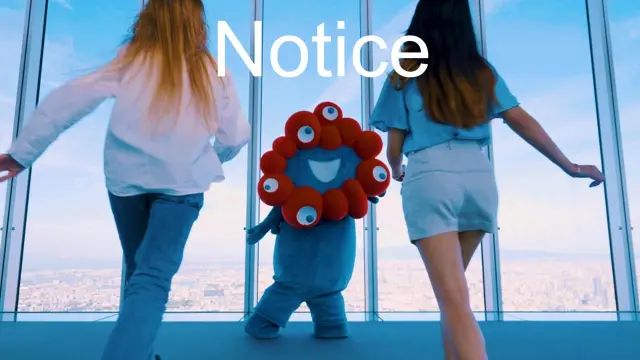
Restrictions on Large Baggage
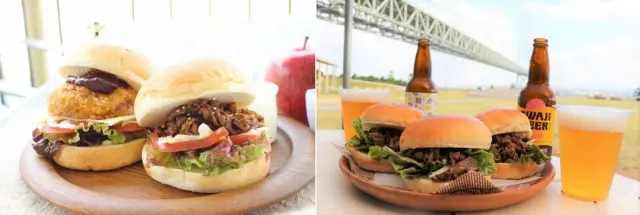
Reviving Past Memories and Emotions! Three spots related to the Food and Fragrance of Awaji Island!!!
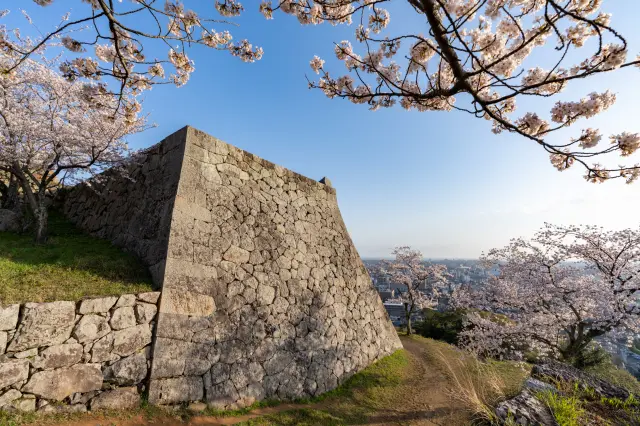
Hidden Stories in Stone: Exploring Japan’s Castle Walls
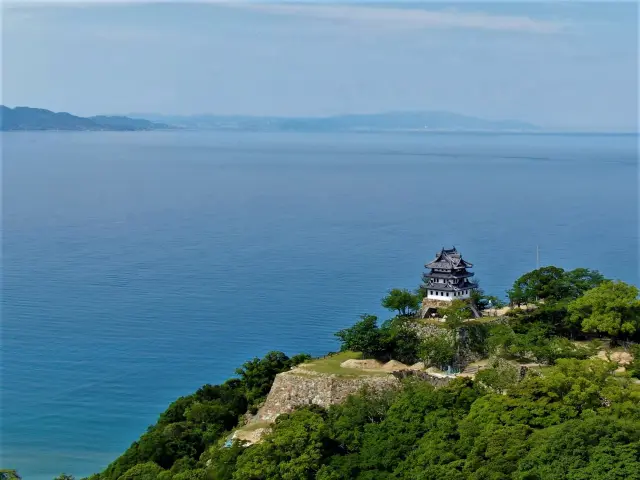
Feel Like a Lord: Castle with Stunning Panorama Views
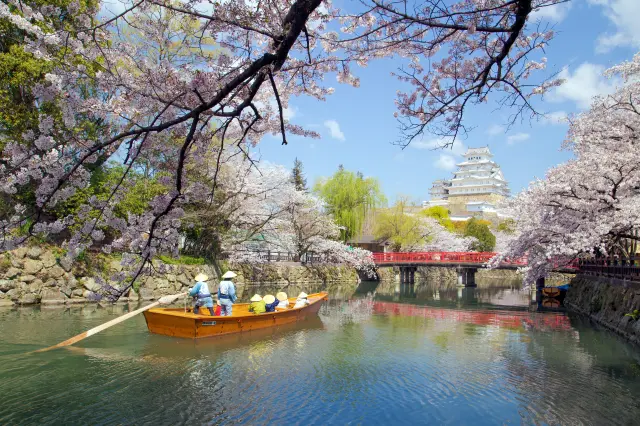
Experience the True Essence of Japan through Castles, Cultural Treasures, and Timeless Gardens
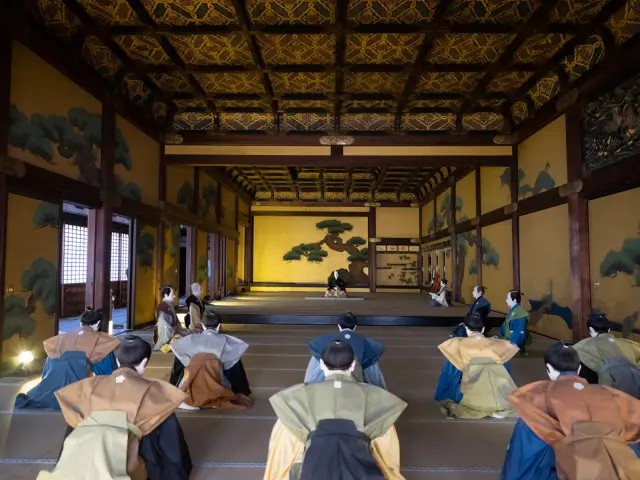
Castles of Tokugawa Ieyasu
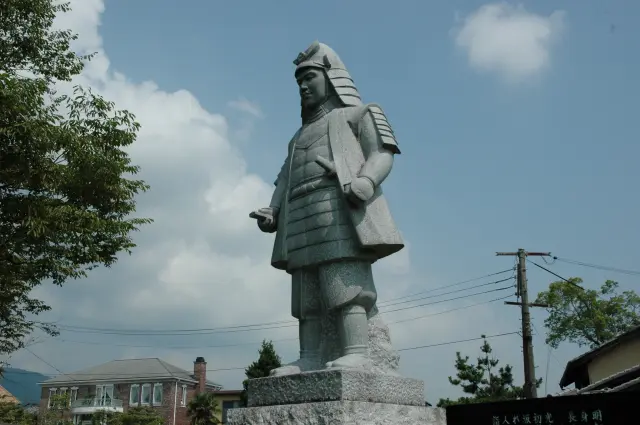
Castles of Akechi Mitsuhide

